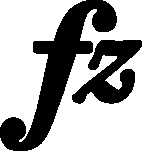



Articulation, Accents, Hairpins
|
b. 17
|
composition: Op. 10 No 2, Etude in A minor
..
Our proposal (long accent) constitutes a resultant of undeniable elements of two sources including independently written indications in this place – Ap and FE (→GE,EE). We do not consider category imprint: Differences between sources issues: Long accents , Authentic corrections of FE |
||||||||
|
b. 17
|
composition: Op. 10 No 2, Etude in A minor
..
Chopin would gradually waive the indication of accents at the beginning of three characteristic four-note motifs in the R.H. Ap has three such accents, while in FEcor Chopin initially wrote the second and third of them. Eventually, he deleted the signs, covering them with the fingering. category imprint: Interpretations within context; Differences between sources; Corrections & alterations |
||||||||
|
b. 18
|
composition: Op. 10 No 2, Etude in A minor
..
In the main text we give the staccato dots written by Chopin in FEcor. The dots were omitted in FE (→EE) and in GE both octaves were combined with a slur. The authenticity of the latter is unclear – seeing the previous slurs, the reviser of GE could have considered the lack of slur over the last pair of crotchets as an oversight. category imprint: Differences between sources issues: Authentic corrections of FE |
||||||||
|
b. 18
|
composition: Op. 10 No 2, Etude in A minor
..
In the main text we give the length-wise harmonised pair of category imprint: Differences between sources |
||||||||
|
b. 19-24
|
composition: Op. 10 No 2, Etude in A minor
..
In the main text we give the dots with which Chopin provided all quavers in these bars in FEcor. Ap also includes staccato signs – alternating wedges and dots – yet only over four bass notes in bars 19-21. category imprint: Differences between sources; Corrections & alterations issues: Authentic corrections of FE |



 in
in 








 in
in 


